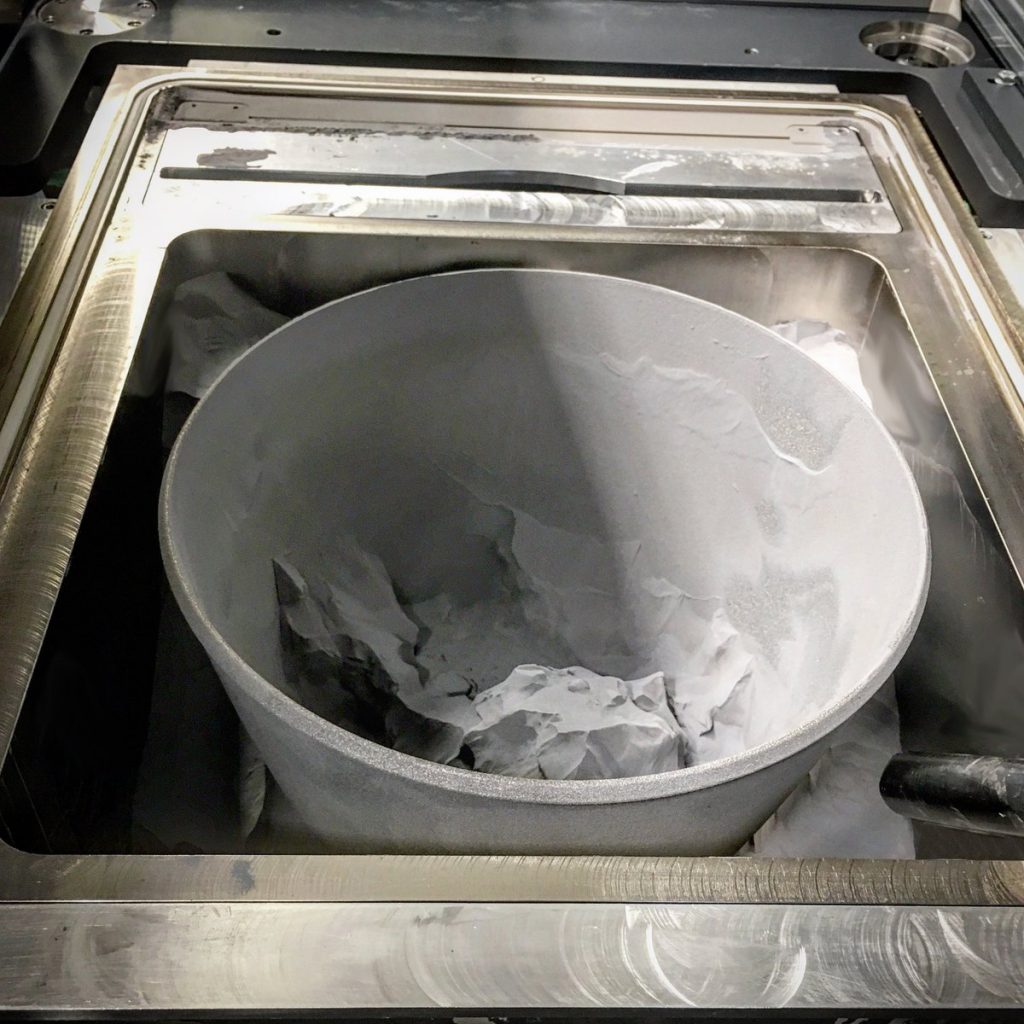Avid readers will remember news last week that British spaceflight company Orbex had produced the largest, single-piece 3D printed rocket engine in the world. However, just over 7 days since this announcement, American private aerospace company Launcher has emerged to challenge the title.
Teased on the company’s Twitter account on the day of Orbex’s press release, Launcher has subsequently announced that its E-2 engine is the largest 3D printed chamber of its kind. Made by AMCM, an EOS Group company that makes custom additive manufacturing machines, the E-2 is capable of 22,000 lbf in thrust. Dimensions of the part have been reported as 850 mm tall by 400 mm in diameter.

Launcher moves to the next generation
Launcher is an aerospace startup founded in Brooklyn, New York, in 2017. A producer of hydrogen-alternative liquid oxygen (LOX) propulsion systems, the company has, for the past two years, been developing and test firing its E-1 engine. In this time, the E-1 has undergone a number of modifications. Initially, it was made entirely from aerospace-grade superally Inconel 718. The latest iteration, test fired December 2018, is made from a copper alloy, spray coated with Inconel. The base copper engine was produced by the company in collaboration with leading German OEM EOS.
Now working with AMCM, on a modified EOS M400 series 3D printer called the M4K, Launcher has entered its second generation of LOX engines.
Test firing of Launcher’s last E-1 engine, made from Inconel-coated copper. Clip via Launcher
The world’s largest, single-piece 3D printed rocket engine?
Though announced to the public last week, Orbex has yet to specify the dimensions of its Prime engine. This world’s-largest contender however was made on an SLM 800 system from Lübeck’s SLM Solutions. This machine has a build area measuring 260 x 500 mm, with the capacity to build parts up to 800 mm tall. Already, this could mean that the Launcher E-2 exceeds the height of the Prime, as it reportedly stands at 850 mm tall.
As stated by Launcher, “3D printing as a single part, without the need for welding or flanges to assemble smaller sections, allows Launcher to optimize cooling and maximize engine performance. It also reduces cost and complexity while speeding up production timelines.”
“This is part of our mission to build the highest-performance, lowest-cost liquid rocket engine for small satellite orbital launch vehicle.”
The 3D printing space race is nothing new. In 2016 Rob Meyerson, President of Jeff Bezos’ private aerospace company Blue Origin presented what he believed to be the largest 3D printed part in the sector at the 67th International Astronautical Congress (IAC). The only current objects to hold a Guinness World Record for their 3D printing achievements are Made In Space’s 37.7 meter long beam, the “Longest 3D printed non-assembled piece,” and a Boeing 777x wing tool, the “Largest solid 3D-printed item,” made at Oak Ridge National Laboratory.

Nominate Launcher and AMCM for Aerospace Application of the Year in the 2019 3D Printing Industry Awards. For regular additive manufacturing aerospace news updates subscribe to our newsletter, follow us on Twitter and like us on Facebook. Visit 3D Printing Jobs for new additive manufacturing opportunities in your area.
Featured image shows Launcher’s single-piece 3D printed E-2 engine. Laptop for scale. Photo via Launcher



